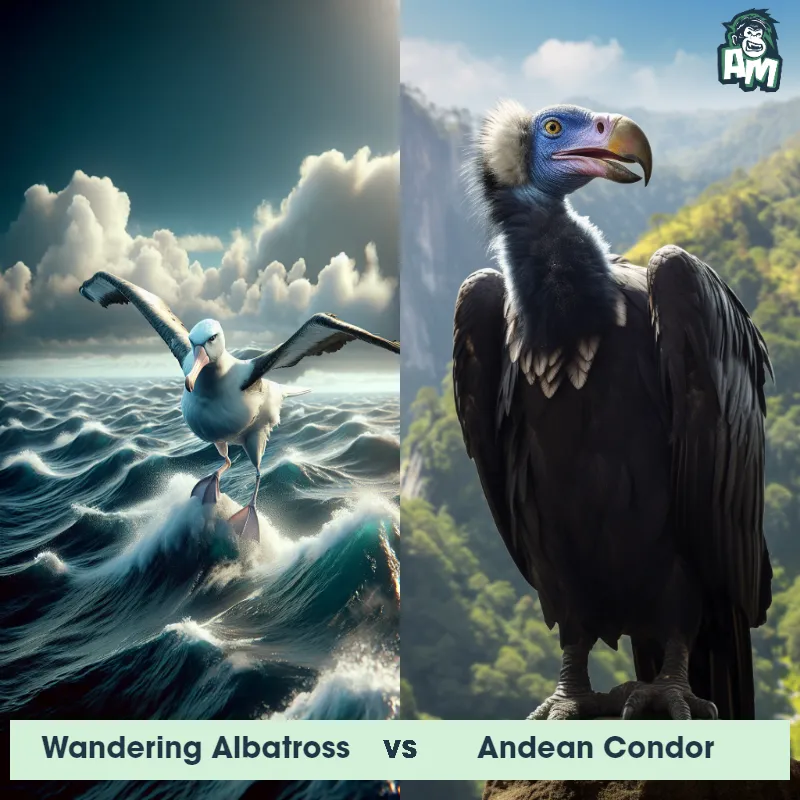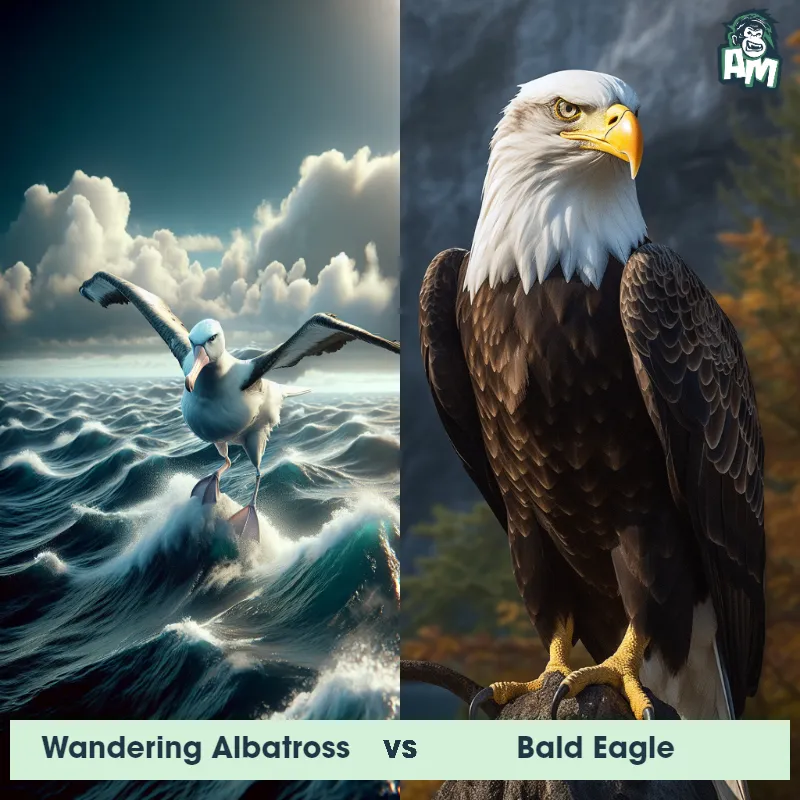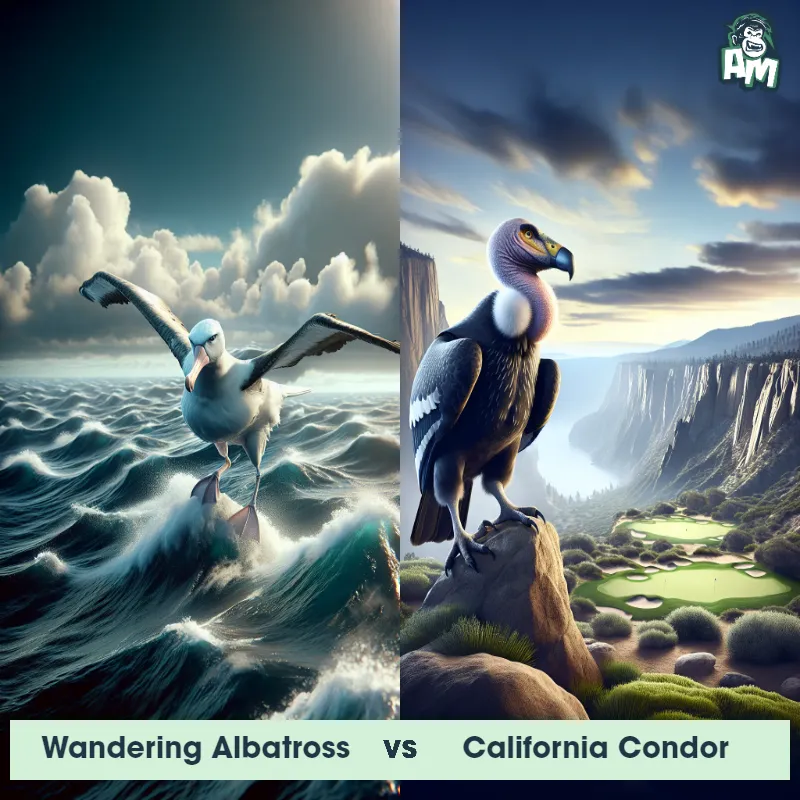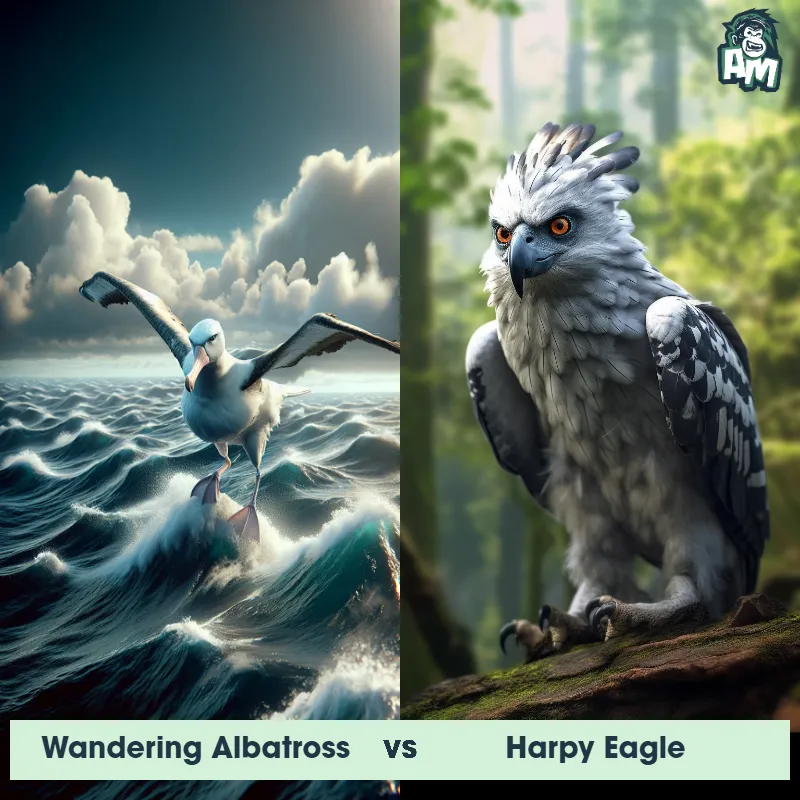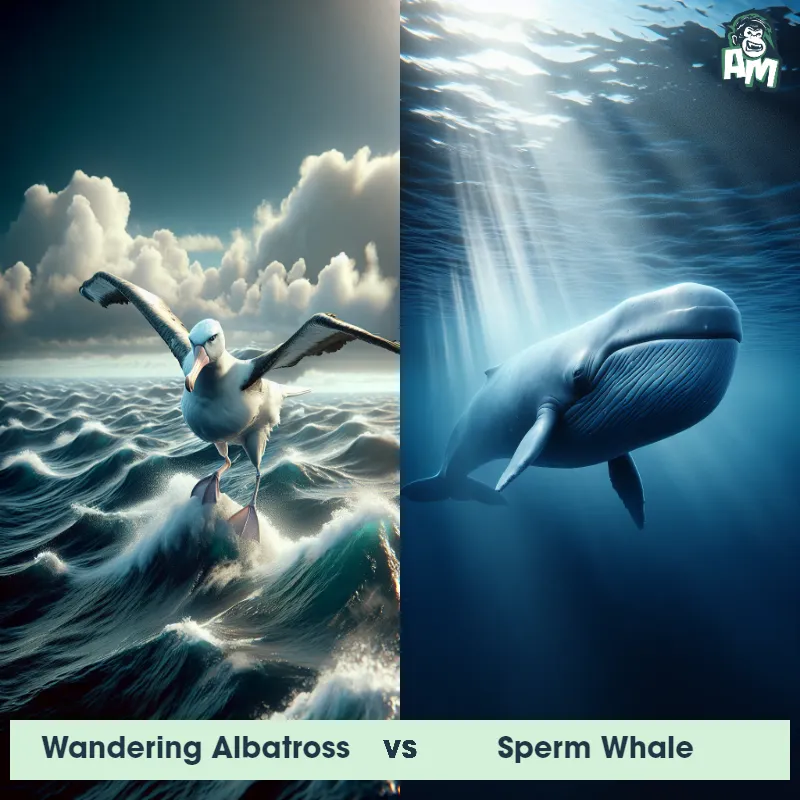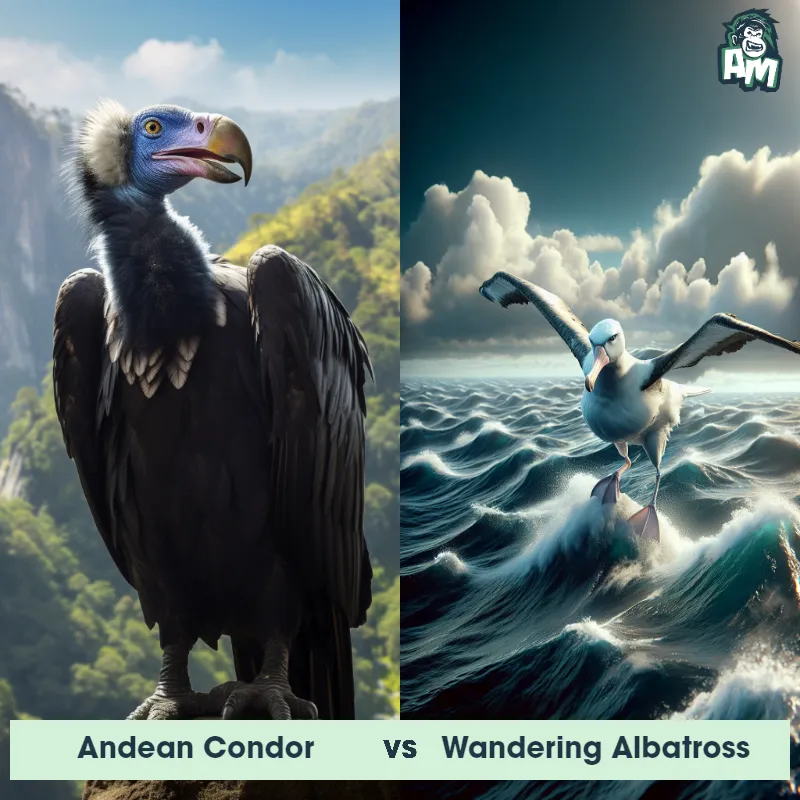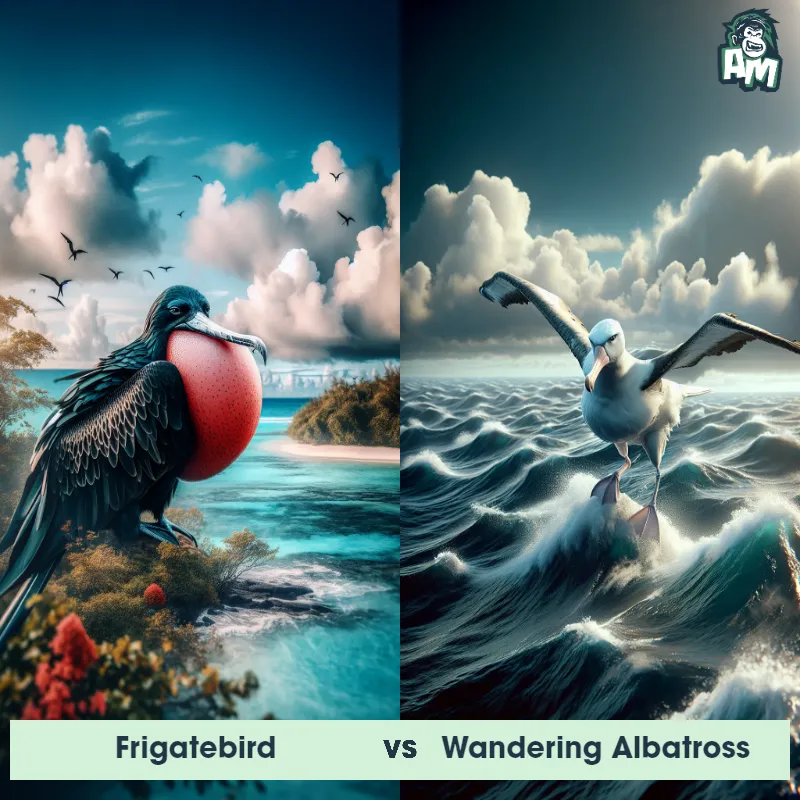The Wandering Albatross
The Wandering Albatross, also known as Diomedea exulans, is a majestic seabird that belongs to the albatross family. This species is renowned for having the largest wingspan of any living bird, reaching an impressive measure of up to 11 feet. With their long, slender wings, they effortlessly glide through the air, utilizing air currents to cover great distances over the southern oceans. These beautiful birds have a white plumage, with black outer wing feathers and a distinctive pinkish bill. They possess a keen sense of smell, allowing them to locate food sources such as fish and squid from great distances. Wandering Albatrosses are known for their lifelong monogamous relationships and elaborate mating rituals, consisting of intricate dances and vocalizations.
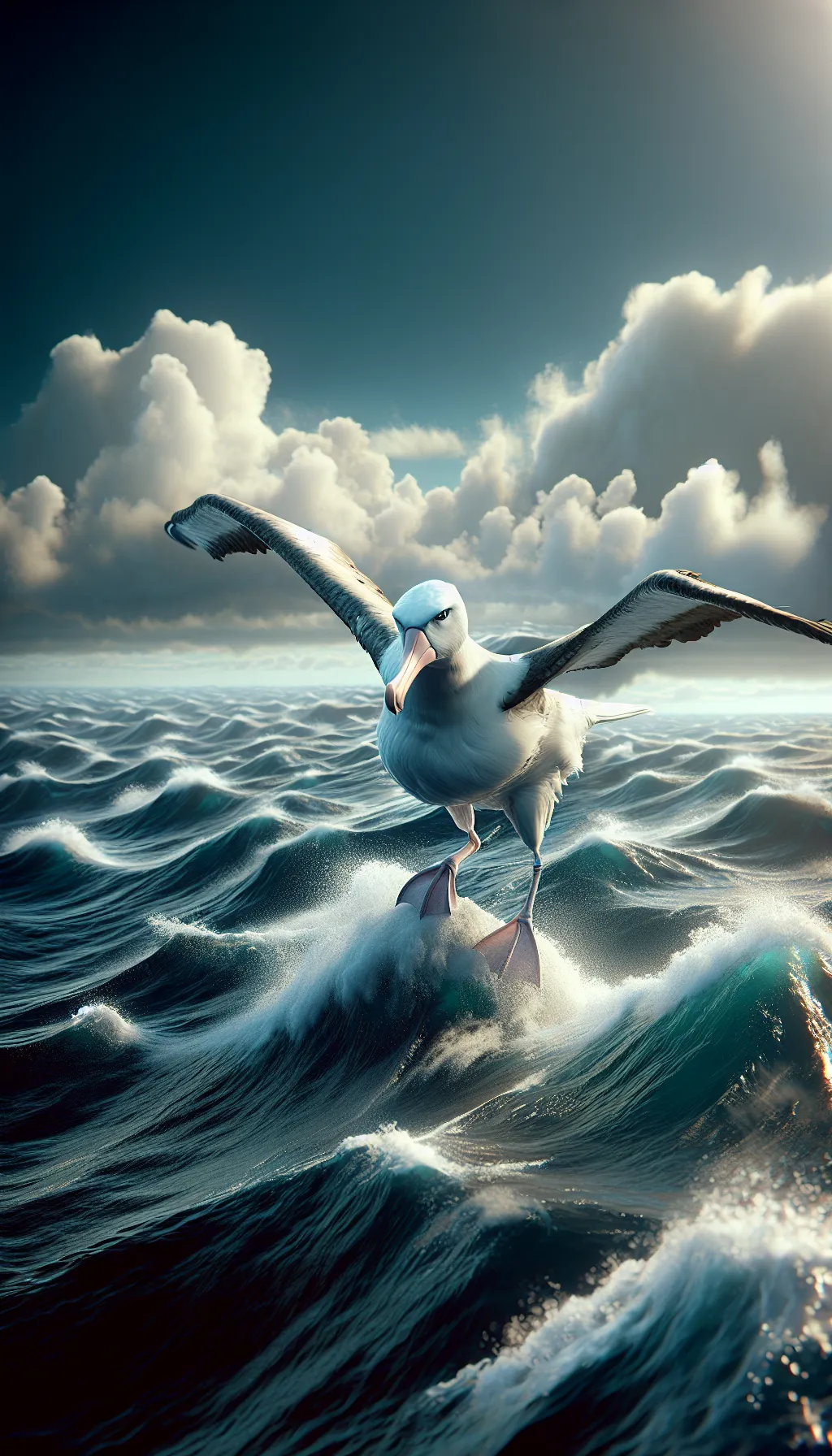
| Wandering Albatross | |
|---|---|
| Size | Wingspan: 10 to 11.5 feet (3 to 3.5 meters) |
| Weight | 9 to 11 pounds (4 to 5 kilograms) |
| Speed | 79mph (127km/h) |
| Key Strength | Strong wings and beak |
| Biggest Weakness | Clumsy on land, weak on solid ground |
| Scientific Name | Diomedea exulans |
| Family | Diomedeidae |
| Habitat | Open ocean, southern seas |
| Geography | Nesting on subantarctic islands, foraging in southern ocean waters |
| Diet | Squid, fish, crustaceans |
| Lifespan | 50 years - 60 years |

The Wandering Albatross
The Wandering Albatross, also known as Diomedea exulans, is a majestic seabird that belongs to the albatross family. This species is renowned for having the largest wingspan of any living bird, reaching an impressive measure of up to 11 feet. With their long, slender wings, they effortlessly glide through the air, utilizing air currents to cover great distances over the southern oceans. These beautiful birds have a white plumage, with black outer wing feathers and a distinctive pinkish bill. They possess a keen sense of smell, allowing them to locate food sources such as fish and squid from great distances. Wandering Albatrosses are known for their lifelong monogamous relationships and elaborate mating rituals, consisting of intricate dances and vocalizations.
Fun Fact: Wandering Albatrosses have been recorded flying thousands of miles in a single journey, covering incredible distances of up to 10,000 miles without needing to rest.
| Wandering Albatross | |
|---|---|
| Size | Wingspan: 10 to 11.5 feet (3 to 3.5 meters) |
| Weight | 9 to 11 pounds (4 to 5 kilograms) |
| Speed | 79mph (127km/h) |
| Key Strength | Strong wings and beak |
| Biggest Weakness | Clumsy on land, weak on solid ground |
| Scientific Name | Diomedea exulans |
| Family | Diomedeidae |
| Habitat | Open ocean, southern seas |
| Geography | Nesting on subantarctic islands, foraging in southern ocean waters |
| Diet | Squid, fish, crustaceans |
| Lifespan | 50 years - 60 years |
Wandering Albatross Matchups
We use AI to simulate matchups between the Wandering Albatross and other animals. Our simulation considers size, strength, and natural predatory behaviors to determine the most likely outcome.

Can't find the Matchup you want?
Create Your Own MatchupWandering Albatross: Diet, Predators, Aggression, and Defensive Behaviors
What do Wandering Albatrosses eat?
Wandering Albatrosses primarily feed on fish, squid, and crustaceans. They are skilled predators that use their keen eyesight to spot prey from high above the ocean's surface. They are known to travel long distances in search of food, often following fishing vessels to scavenge for leftovers.
Do Wandering Albatrosses have any predators?
Wandering Albatrosses are impressive birds with few natural predators due to their large size and ability to soar long distances. However, their eggs and chicks are vulnerable to predation by invasive species such as rats and feral cats on their breeding islands. In some cases, adult albatrosses may also fall prey to large birds of prey like skuas.
Are Wandering Albatrosses aggressive?
Wandering Albatrosses are not typically aggressive birds. They are known for their peaceful nature and spend a majority of their time flying over the open ocean in search of food. They do, however, display aggression towards intruders near their breeding colonies to protect their mates and nesting sites.
Do Wandering Albatrosses fight?
Wandering Albatrosses are not known to engage in physical fights with each other or other species, as their territorial disputes are usually settled through displays of courtship or aggressive behavior. These displays involve posturing, vocalizations, and bill-snapping rather than actual physical violence.
How do Wandering Albatrosses defend themselves?
Wandering Albatrosses have evolved several strategies to defend themselves against potential threats. One of their main defenses is their ability to fly long distances over the ocean, allowing them to escape from danger quickly. They also rely on their large size and sharp beaks to ward off predators or rivals if necessary.
What is the biggest weakness of Wandering Albatrosses in a fight?
One of the biggest weaknesses of Wandering Albatrosses in a fight is their vulnerability on land. While they are powerful and agile flyers, albatrosses are not well-equipped for ground combat. Their long wings and legs make them less maneuverable on solid ground, leaving them at a disadvantage against smaller, more agile predators that may ambush them near their nesting sites.
Fun Fact: These amazing seabirds have a lifespan of approximately 50 years, with some individuals being recorded to live up to 70 years, making them one of the longest-living birds in the world.
Fun Fact: The Wandering Albatross nests on remote islands, such as the sub-Antarctic islands of South Georgia and the Crozet Islands. They create their nests on rugged terrain, where they lay a single egg and take turns incubating it, with both parents sharing the responsibility equally.



